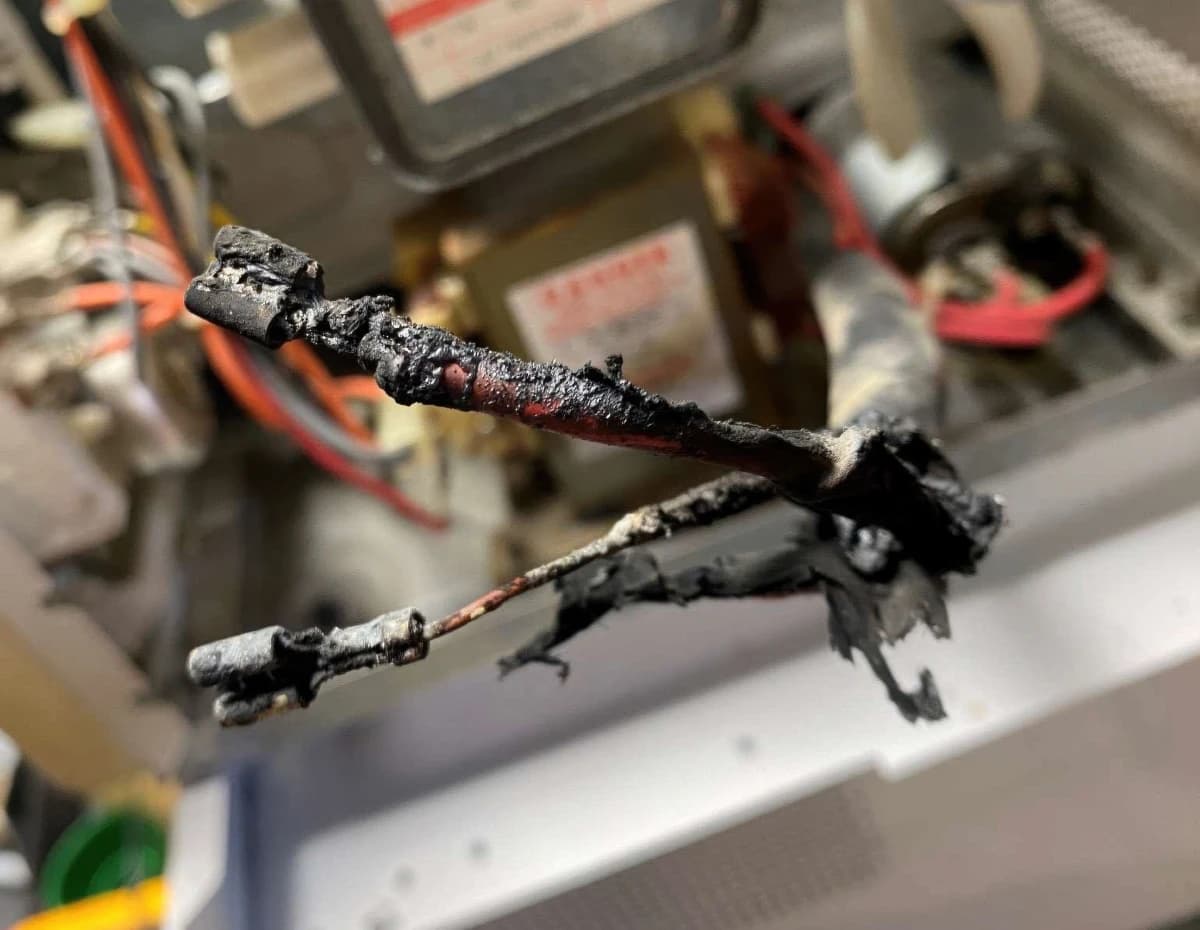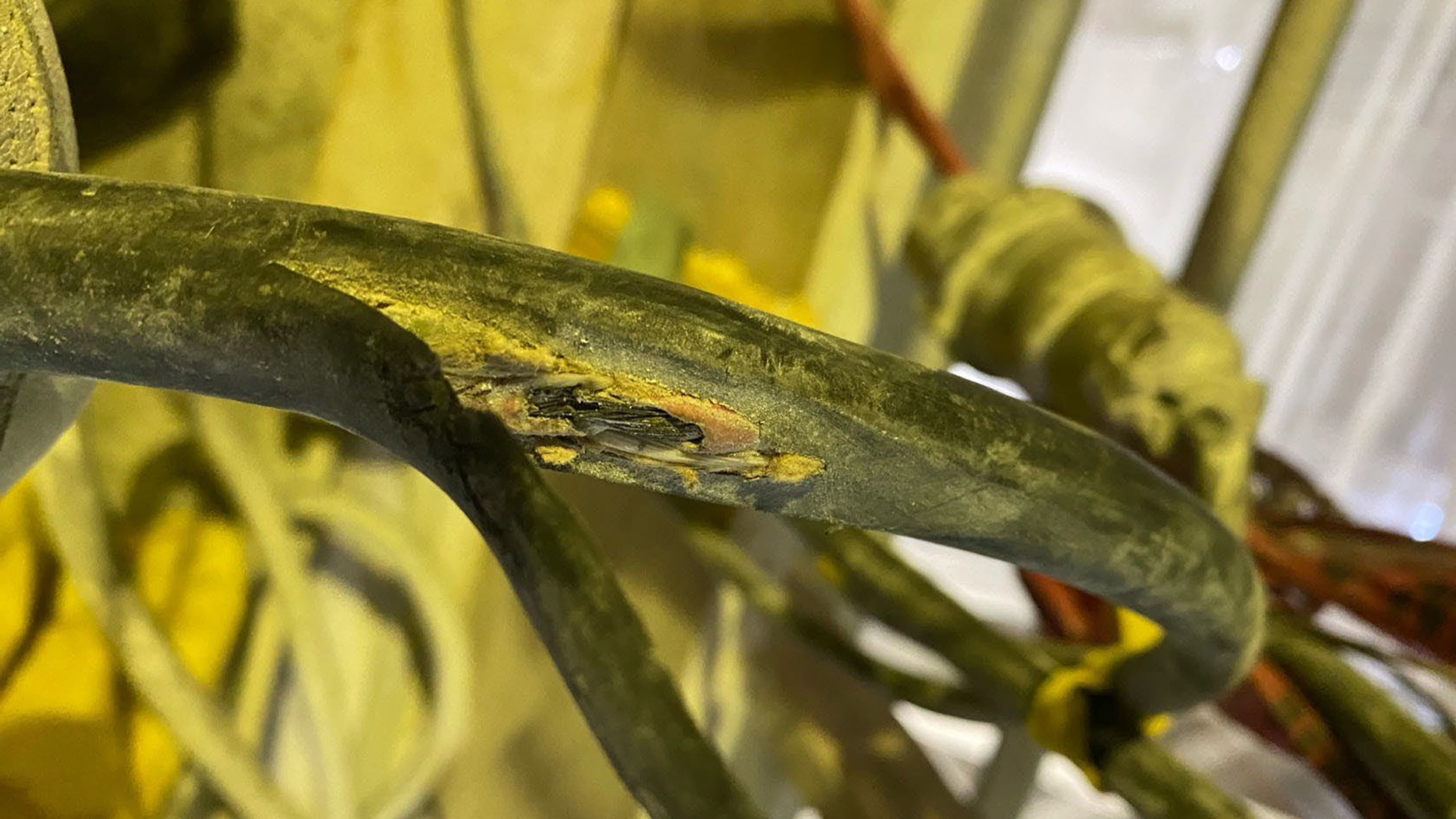Electrical Shock
Annual State of Safety 2024
Electric Shock: A Risk for Contractors and the Public
Electrical workers across BC routinely take steps to keep their job sites safe and minimize the risk of electrical shock. But in cases when safety precautions are skipped, forgotten, or neglected, the chances of an electrical shock increase drastically. Electrical shock can cause serious injury, and even death.
Incidents involving an electrical shock are often underreported. But, because of the large number of incidents that we investigate each year and severity of resulting injuries, we identified electrical shock as one of the highest safety risks in BC's safety system.
A Damaged Electrical Cable Shocks Crane Operator
In electrical work, overlooked safety precautions could mean failing or forgetting to use required safety equipment. In January 2024, this happened in Prince George when an overhead crane operator was shocked by a damaged electrical cable, which tragically led to his death.

In this situation, the flexible electrical cable was feeding 600 Volts into an electric crane. It led from the floor to the edge of the lifting bay, where it was then draped over the handrail into the lifting bay, and up to the crane to retain the flexibility required. A worker was operating the crane using the control pendant and contacted the exposed, energized conductor, receiving an electrical shock.
Cranes require the power feed cable to be movable so that it can follow the trolley along the rails. This can be done using rigid main contact conductors, festoon cables or a flexible cable with a take-up device. Importantly, this crane system was not equipped with a take-up device as required to protect the slack cable from damage.
At some point, the cable was sliced open, likely when the crane moved past a piece of stationary equipment, penetrating through the insulation of one of the phase conductors and exposing the bare copper. When the crane operator came into contact with the bare energized conductor, they became the path to ground, causing the electrical shock. The worker was treated for injuries, but passed away weeks later.
An auto take-up device could have prevented the cable from being damaged, which might have prevented this incredibly unfortunate incident from happening altogether.

Unsecured Substation Results in Major Injuries to Two People
Due to the hazardous nature of energized equipment, electrical workers are responsible for making sure that electrical equipment is not only safe for workers, but for the public, too.
Electrical substations are a common sight across the province. You can usually spot them outside of businesses, in suburban developments and residential buildings, and industrial sites. Their purpose is to convert electricity into different voltages. Due to high voltages, these substations are designed and built to rigid specifications to maximize safety for both workers and anyone who might come in contact with them.
In May 2024, in Powell River, two unauthorized people entered a substation, came in contact with energized equipment and lost consciousness. Both received major injuries, including electrical burns on the skin, and internal injuries.
Despite the unauthorized entry, the substation did not adequately provide warning about the danger of high voltage energized contacts contained within, and its access doors were not properly secured. Unit substations are meant to be locked to prohibit unauthorized entry. Although the unit sub and transformer were secured by doors with consumer padlocks, witnesses reported that the padlocks had been missing for weeks or months prior to the incident, and no padlock was found on the scene. In other words, the substation was completely open to entry for an unknown period of time.
Additionally, the utility warnings were located on the rear where trees obstruct the view. No labelling was found inside the doors which should have indicated the danger level and PPE requirements. The last scheduled maintenance for the unit was completed in 2022.
The incident above demonstrates how critically important it is for asset owners — in this case, the utility and the commercial owner of the substation — to properly secure energized equipment. This oversight, combined with inadequate warning signs and a lack of regular safety inspections all contributed to an otherwise preventable incident.
Electrical Shock Education and Outreach
One way we are addressing the danger of electrical shock in BC is through multimedia public safety campaigns designed to educate the general public about possible hazards and best practices when interacting with electrical equipment.
In addition to our incident investigations, we are also in close contact with members of BC’s electrical industry and regularly share incident reports with them to help others learn from the incidents we’ve encountered.
Due to the risks associated with electrical work, the use of unqualified workers, and the emerging risks associated with changes in climate and new technologies, we still see a need for education campaigns for both the public and our clients when it comes to regulated electrical work.
Compliance and Enforcement
Addressing unlicensed work is a top priority for Technical Safety BC. To help licensed contractors understand legislative requirements, we have engaged with them through educational efforts, including publishing resources such as the Responsibilities of a Licensed Contractor and launching awareness campaigns.
In 2024, we took proactive steps to identify and investigate those who are not participating in the safety system. By searching online advertisements, obtaining meter installation reports from utility companies, and receiving public reports, we identified suspected cases where work was performed by an unlicensed business, uncertified workers, or without permits, and have conducted over 1,200 investigations. Our efforts uncovered several critical issues, including unsafe work conducted by unqualified individuals.
In addition to our compliance and enforcement efforts, we continue to see the value in encouraging licensed contractors, FSRs and electricians to refer to their safety training and procedures while further educating the public about the risks of work conducted by unqualified individuals.
You Might Be Interested In
Building Confidence
Learn about our risks in focus. See how we’re improving the client experience and enforcing against those who work outside of the safety system.
Learn MoreSafety Engagement
We provide technical training and education to support our partners. We also work to influence people in the safety system to make safety-minded decisions.
Learn MoreData and Trends
Find key statistics on permits, incidents, injuries, assessments, and more.
Learn More